The Hommel
Friesland: Noardse or Noordsche balkFlanders (Belgium): vlier
German: Scheitholt; Zither (in general)
Italian: cetra da tavola (in general)
French: Épinette de vosges
Classification and Etymology
According to the Hornbostel-Sachs system a zither is a "simple chordophone," consisting solely of a string bearer (and its string or strings) or of a string bearer with a resonator that can be detached without destroying the sound-producing apparatus.
This distinguishes zithers from "composite cordophones" like the lute, cittern or harp, in which the string bearer and a resonator are organically united and cannot be separated. Whereas the strings of a lute extend past the face of the instrument along a neck, the strings of a zither do not go beyond or away from the body of the instrument.
The hommel is distinguished from other box zithers by having two sets of strings: the melody string/s and the drone strings. The first are tuned in unison and are stretched over a fretboard, while the second are always used as open strings, sounding the same chord in a drone.
The History and Relatives of the Hommel
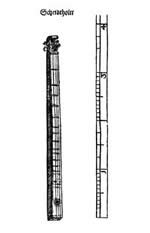
Since zithers previously existed in eastern Asia (like the Chinese Guzheng or the Japanese Koto) the fundamental structure of these plucked instruments may have been brought to Europe in early sixteenth century by European merchants who had traveled to the Far East.
The hommelThe Dutch term hommel for the fretted zither has not to be confused with the small bagpipe called by Michael Praetorius "Hummel" or "Hümmelchen," probably also due to its buzzing sound. and its French relative, the Épnette de Vosges, a disreputable instrument played by beggars. The instrument he described had one melody string with eighteen frets beneath it, set directly into the box, and three bourdon strings or drones, running over a sound hole in the shape of a rosette and tuned by wooden pegs laterally set in a curved pegbox. The melody string was stopped against the frets by a small rod held in the left hand, and the right-hand thumb struck across all the strings. Depictions of the Scheitholt (fig. 1) before Praetorius are rare, but appeared in the fifteenth century, for example, in the high altar of the Brüdernkirche in Brunswick (c. 1410), showing scenes of the life of the Virgin Mary and the passion of Jesus Christ, with a number of period musical instruments. It also sppears on an oak panel from c. 1600 in a depiction of the parable of the Prodigal Son (Schleswig-Holsteinisches Landesmuseum, Germany).Andreas Michel, "Scheitholt und Frühe Formen der Kratzzither," Instrumentarium Lipsiense (Studies to Instruments from the Museum for Musical Instruments of the University Leipzig).
The first known Dutch hommel dates back from 1608 and is housed in the Gemeentemuseum in The Hague. It is probably the oldest preserved plucked dulcimer in Europe.
Hommels appeared in various shapes: the earlier ones are plain rectangular boxes, later ones also trapeziform, in the shape of a half-bottle or viol, often finely carved, with up to four soundholes and some with a superimposed fretboard.
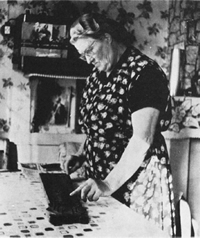
from: Ferd de Hen, Folk Instruments of Belgium: Part I.
The Galpin Society Journal 25 (July 1972), Plate XI.
With kind permission by the author and the Galpin Society.
The hommel's name also varies. Two written sources (a play, Amsterdam 1639, and a Frisian inventory from 1660) mention a Noordsche balk ("nordic beam") (fig. 3, as the hommel is called in Friesland (Frisia) which had a half-bottle form and was played with a bow.
In Flanders and Brabant (provinces of today's Belgium), where the hommel still enjoys considerable popularity in folk orchestras, various forms of hommels have local names like vlier, blokviool, krapkas ("scratching box") or epinet. (fig. 2). For details see the expert-box at the bottom of this page.
The first extensive Dutch description of the hommel occurs in Grondig ondersoek van de Toonen der Musijk ("Fundamental research to the sounds of music") by the Frisian organist Klaas Douwes (published in 1699).
The hommel was primarily played in the privacy of the family circle of the lower classes. The great majority of the players were farmers, craftsmen or itinerant tradesmen who played at the fairs, and in years to come, factory workers. It is indeed the only folk instrument played by women, and more than half of the hommel-players still known by name today, are women. Unfortunately, not a single hommel has ever been detected in paintings of any kind.
Friesland, 18th century
from: Hubert Boone (1976), 74.
With kind permission by the author.

The soundbox is hollowed out of a wooden log, the backside is open. 18 metal frets (1-3 and 7 broader) are placed directly on the soundboard. 1 melody- and 2 bourdon strings. Length: 841 mm, width: c. 58 mm, height: c. 59 mm.
The hommel may occasionally have been employed for the accompaniment of the congregational singing. The earlier municipal museum of Ypres (West Flanders), unfortunately destroyed during First World War, once housed a large hommel from the seventeenth century that substituted a church organ.The Belgian musical historian Edmond Vander Straeten reported about this precious, remarkably large instrument in his article "Le Noordsche Balk du musée communal d'Ypres'" 1868. Unfortunately the original instrument was lost with the demolition of the municipal museum of Ypres in World War I. Fortunately, a reliable copy had been made before the war, comissioned by Caesar Snoeck, an instrument collector from Ronse (East-Flanders), in around 1900. This copy is noted in Caesar Snoeck's Catalogue de la collection d'Instruments de Musique Flamands et Néerlandais (1903). See Hubert Boone, De hommel in de Lage Landen ("The Himmel in the Low Countries"), Publikaties van het Volksmuziek-archief no. 3, Instrumentenmuseum Brussel, 1976, 36f., with notes 7–11. (Includes summaries in English, French, and German.)
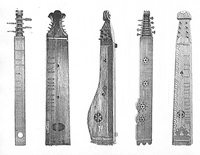
But the hommel also served the military. In 1771, J. W. Lustig mentioned the hommel as an instrument for soldatenmuziek ("soldiers' music"). It was especially popular among
Click here for period Scheitholt music:
An audio-example of the Scheitholt, played by Helga Wagner.
Belgian front soldiers in First World War.Hubert Boone, De hommel in de Lage Landen ("The Himmel in the Low Countries"), Publikaties van het Volksmuziek-archief no. 3, Instrumentenmuseum Brussel, 1976, 161.
During the first half of the nineteenth century the hommel had gradually fallen out of use and was only sporadically played in Frisia and northern Holland, mainly by elderly people. In his article "De hommel of Noordsche Balk,"Earlier a short stick of bone or a goose quill, today rather commercial plectrums. J. C. Boers reports the story of an old woman from the isle of Föhr (North-Germany) who related that her hommel came from Holland (Frisia) where eldery men or women accompanied home singing and "Sunday afternoon psalms" up to the 1870s.
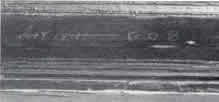
With the folk music movement in the 1960s the hommel regained great popularity, especially in Belgium which encouraged scientific research on folk instruments.
Structure and Playing Technique of the Hommel
(see: Boone, Hubert. De Himmel in de Lage Landen/The Himmel in the Low Countries. Brussels, 1976, 104–105.
With kind permission by the author.)
Since the hommel was built in a variety of shapes, it is difficult to define its structure. In his extensive study De hommel in de Lage Landen (see note 3), Hubert Boone describes five main types, all subdivided into subcategories.
Plucking the strings with a quil.
The early hommels (like the one from 1608) (fig. 4) were made of a log of native wood (fir, poplar) about fifty to eighty cm long. The sound box was hollowed out at the back side. Usually hommels have only one soundhole, about twelve to eighteen metallic frets placed directly on the soundbox, one or two melody strings running over the frets and two drones beside the melody strings. The strings were made of steel or brass and tuned with laterally placed wooden pegs in a simple pegbox carved out of the left side of the instrument. Later, they were fixed on iron wrest pins fitted on the soundbox and tuned with a key.
In the eighteenth and nineteenth century, the hommel's form became more complex, with two to four elaborately carved soundholes and a pegbox, a superimposed fretboard or a second soundbox. The number of strings increased to two up to five melody strings and six or more drones.
In the early twentieth century, villagers from southern Kempen (province Antwerp/Limburg) and northern Hageland (Flanders) built hommels with two or three series of harmony strings. These types were used to accompany the smaller discant instruments, when playing in a group.
Hommel scales are intended for one or more modes, which are given note names (e.g. C mode). The scales produced from the frets are usually diatonic, (without semitone, in other words: the white keys of the piano). Since about 1900, instruments with three semitones between the sixth and the eighth degree appeared. Some hommels are partially or fully chromatic.Hubert Boone, De hommel in de Lage Landen ("The Himmel in the Low Countries"), Publikaties van het Volksmuziek-archief no. 3, Instrumentenmuseum Brussel, 1976, 161. Those with a scale for the authentic C mode usually have a compass of two octaves, some have two octaves and a third, fourth or fifth. Scales with three octaves are exceptional.
The hommel is played with a noter held in the left hand, a stick of hard wood, five to seven centimeters. long, for the fretting, and by plucking the melody string/s and drones with a plectrumEarlier a short stick of bone or a goose quill, today rather commercial plectrums. held in the right hand. Instead of the noter some players use the fingers of the left hand to stop the melody string/s on the frets and pluck with the fingers and occasionally the thumb of the right hand.
Noting (fretting) and plucking are generally done simultaneously; rapid melodic passages and grace notes are played with one single stroke (glissando). While playing, the instrument is usually placed on a table top or chest; the musician sits down or plays standing. Occasionally the hommel is played while held across the lap or knees.
In former times, the hommel was also played with a bow, particularly in northern Holland and Frisia. Bowing was only possible with instruments with one or two melody strings. The hommel can be played alone but also together with other hommels or other instruments, especially the fiddle. Even in earlier times people enjoyed little evening music-making sessions, particularly in the dark of winter, when nothing much could be done outside.
No specific hommel repertory or sheet-music has survived from the past. We have to keep in mind that the players of the hommel were often illiterate and learned the tunes from the elders. Being such a simple instrument, the hommel is a rather simple to learn, compared with a fiddle or lute. Its repertory ranges from traditional folk songs and dance music to modern hits.
The Hommel Today
A modern relative of the northern European hommel is the American Appalachian dulcimer, also called "Mountain" or "Kentucky dulcimer."The term "dulcimer" derives from the Latin "dulcis" = sweet, and the Greek "melos" = song, but has not to be confused with the dulzian, the forerunner of the bassoon. The Appalachian dulcimer is a simple instrument to play and has a soft gentle tone. Children understand it, love it, and can play it immediately. Its sound volume was well-suited to small home gatherings.
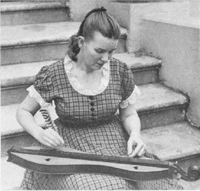
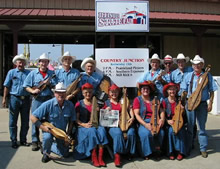

The Appalachian dulcimer, belonging to the subfamily of the fretted zither, appears to have ancestral ties to German and Scandinavian instruments.To the various hypotheses concerning the Appalachian dulcimer's European provenience see Charles Seeger, The Appalachian Dulcimer. Journal of American Folklore 71, 279, 1958. 40–51. It developed (1700 to mid-1800s) in southwestern Pennsylvania with the blending of Scottish and Irish musical traditions and immigrants who brought with them the German Scheitholt, the French épinette des Vosges or the Norwegian langeleik. The early Dutch settlers too, brought their hommels across the Atlantic to the New World. However, it is believed that the Appalachian dulcimer derives mainly from the Scheitholt by German speaking immigrants who came to Pennsylvania, traveled south-west through Maryland and Virginia and then west to Kentucky and Tennessee in the eighteenth century.
In its transitional period (mid-1800s' to c.1940), the dulcimer assumed its popular hourglass and teardrop shapes, with bulges on both sides although there were many other shapes as well. Today, one may find childrens' size dulcimers and much larger ones for concert-playing.

Towards the end of the nineteenth century, the Appalachian dulcimer was brought to the attention of outsiders by rural settlement schools and crafts movements. This encouraged mountain residents to preserve the dulcimer but restrained further development. In the early 1900, it was embraced both by scholars and folk music enthusiasts.
Around the middle of the twentieth century, the dulcimer entered the urban northeast folk revival scene, largely due to the great Kentucky-born musician Jean Ritchie (fig. 5), the "Mother of Folk," who performed and recorded extensively. She published the first important instruction book for the dulcimer in 1963.
The folk revival movement introduced the dulcimer to a wider audience and brought to life a whole cottage industry throughout the USA. Makers refined the instrument and developed a number of variants. Today, the Appalachian dulcimer is a standard musical instrument at both North American and British folk festivals.

The construction and playing technique of the Appalachian dulcimer is similar to that of the hommel. The instrument is about seventy-five to ninety cm long, its width varies according to the shape of the soundbox. It is made of long seasoned American hardwoods like walnut, cherry, wormy chestnut, butternut or maple, native to the Appalachian region. The common dulcimer has three metal strings, sometimes with one or more doubled, usually the melody string, so that the melody can be better heard over the drones. Contemporary dulcimers frequently have four or more strings. The fingerboard is divided by metal frets into two and one-half or three octaves of the diatonic scale (see above under "hommel"), rendering the dulcimer a modal instrument. The two most common modes used for the dulcimer are the Ionian (the major scale) and the Mixolydian mode, a natural minor mode. These modes are two of the seven musical modes from ancient Greek.More detailed information about the various musical modes are to be found under Mode (music) with sound-examples to the seven ancient Greek modes.
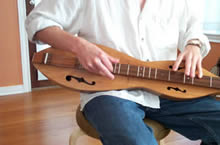
On earlier dulcimers the frets were placed under the melody string(s) only, but on contemporary instruments they extend the full width of the fingerboard, allowing all strings to be used for both the melody or the chords.
The dulcimer is commonly played by posing it horizontally on the player's lap. It may be set in a similar position on a table or chest of drawers, to enhance the sound, or hung around the player's shoulder.
As the hommel, there are two predominant methods of playing the dulcimer: either with a noter for fretting the melody strings, and a plectrum for the plucking; or with the fingertips: those of the left hand to depress the string(s) on the frets, and those of the right hand (sometimes including the thumb) for plucking the strings. Techniques for using all strings for melody, for playing chords and for finger-picking have been developed by traditional as well as contemporary players.
The traditional repertory of the Appalachian dulcimer includes the hundreds of thousands of old British and Irish ballads, hymns, folk songs and dance tunes. This emphasis on the "old-time music-style" caused a kind of romanticism for the instrument, and the dulcimer was still associated mainly with a "romantic" style at the end of the 20th century. But meanwhile contemporary players have expanded the repertory employing the dulcimer also for gospel, blues and commercial hillbilly music or even for experimental forms of music.
Hommel resources:
- Boone, Hubert. De Himmel in de Lage Landen. Publikaties van het Volksmuziekarchief no. 3. Instrumentenmuseum Brussel, 1976. (Includes summaries in English, French, and German.)
- Boers, J. C. "De Himmel of Noordsche Balk." Tijdschrift der Vereeniging voor Noord-Nederlands Muziekgeschiedenis, D. 1ste, 1ste Stuk (1882): 1–9. Published by Koninklijke Vereniging voor Nederlandse Muziekgeschiedenis.
- Michel, Andreas. Scheitholt und frühe Formen der Kratzzither. Instrumentarium Lipsiense (Studies to Instruments from the Museum for Musical Instruments of the University Leipzig)
- Seeger, Charles. "The Appalachian Dulcimer." Journal of American Folklore 71, no. 279 (1958): 40–51.
- Grove Music Online:
https://www.oxfordmusiconline.com/grovemusic - article "Scheitholt" / "Zither": Andreas Michel
article "Hommel": Joan Rimmer
article "Appalachian dulcimer": Lucy M. Long - Wikipedia:
Hommel (muziekinstrument) (Dutch)
http://nl.wikipedia.org/wiki/Hommel_
%28muziekinstrument%29 - Appalachian dulcimer
http://en.wikipedia.org/wiki/Appalachian_dulcimer
Suggested Appalachian dulcimer listening:
- Everything Dulcimer
http://www.everythingdulcimer.com/ - Website of American luthier Keith Young
http://www.appalachiandulcimers.com/appdul.htm